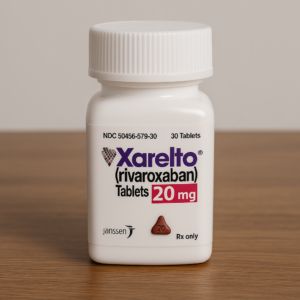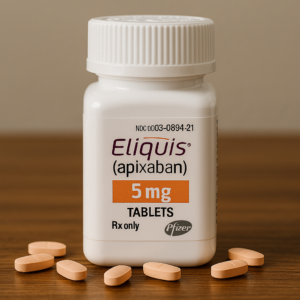Last Updated on October 16, 2024
by Richard Sagall, MD
It’s a choice no one should have to make – pay rent and buy food or get prescriptions filled. Yet all too often it’s a choice Americans, particularly working-age Americans, have to make.
Nearly 28 million Americans have no health insurance, and millions more have limited coverage. Many Americans just can’t afford healthcare, and, if they can, they don’t have the money to buy their medicines.
Prescription Assistance Programs
There is help available for many people who can’t afford their medicines. These programs, frequently called prescription assistance programs (PAPs) or patient assistance programs, are designed to help those in need obtain their medicines at no cost or very low cost.
Many, but not all, pharmaceutical companies have PAPs. The manufacturers who have programs do so for various reasons. Some believe that they have a social obligation to help those who can’t afford their products. Others believe it’s a good marketing tool. As one PAP director once told me, many people who can’t afford their medicines now will go on to obtain some type of coverage. And when they do get this coverage, they will continue using the medication provided by the PAP.
Recent statistics show there are more than 375 PAPs in operation in the U..S. In the past decade, PAPs have helped more than 36 million people obtain their meds. Every year over $13 billion worth of medicines are provided at no cost to people who can’tafford to buy their medications.
PAP Basics
All PAPs are designed to help those in need obtain their medicines. Since each pharmaceutical company establishes its own rules and guidelines, all are different. All have income guidelines, but they vary considerably. Each company selects which drugs are available on their programs and how long a person can receive assistance. The pharmaceutical manufacturers cover the cost of the medicine.
How PAPs Work
Although no two programs are exactly the same, most require an application. The amount of information required varies. Some programs require detailed medical and financial information, others very little. All require a doctor’s signature. Certain programs require the doctor complete a portion of the form while others only need a signed prescription. Most of the programs send the medicines to the patient’s home, while some send the medicine to the doctor’s office for distribution to the patients, and a few send the medicine to a pharmacy or issue a certificate to the patient to give to the pharmacist. Some patients need drugs for a long time. Most, but not all, programs that cover medicines used to treat chronic diseases offer refills.
What Medicines are Covered
The drig companies decide if they will have a PAP and, if they do, which of their medicines will be available through the program. Some include many or all of the medicines they manufacture while others include only a few. The reasons for these decisions are not something they reveal. There are a few programs that sell generic medications at a fixed price. These programs are adding more drugs all the time. Sometimes a medicine or a certain dosage of that medicine will be on a program, then off, and then back on again. Or one dose of the medicine will be on the program but a different dose won’t be.
How to Learn about PAPs
Your doctor is not the best source of information on PAPs. Surprisingly, many doctors don’t even know PAPs exist. The same applies for pharmacists. Many social workers know about the programs. Books in the library or bookstore on PAPs are probably outdated before they are printed because the programs change so often. The best place to learn about PAPs is on the Internet. There are a number of sites that have information on these programs. Many pharmaceutical companies have information about their prescription assistance programs on their websites. Unfortunately, it’s often difficult to find the page that describes their PAP. We recommend visiting NeedyMeds.org for reliable, up-to-date details about PAPs.
How to Find PAPs on NeedyMeds.org
Most PAP sites contain similar information. They differ in how they organize the material, the ease in accessing the information, and the timeliness of their data. To find PAPs on NeedyMeds.org, click on the Patient Savings tab on the top navigation bar. When the dropdown categories appear, you will see a Save on Prescription section. Click on Brand Name Drugs or Generic Name Drugs depending on how your prescription is written. Either of these pages will easily guide you to searching for prescription assistance programs for your medications.
A Few Tips
The most common problem patients encounter when completing the application forms is lack of physician cooperation. Over and over I hear from people whose physicians just won’t complete the forms — or charge to do it. I am asked what they should do.
Here are a few suggestions:
- Make sure you have completed everything on the form that you can. Not only should you complete the applicant’s section, but anything else you can fill in. This may include the physician’s name and address, phone number, etc.
- Bring all the information your doctor may need. For example, some programs require proof of income. If so, attach whatever documents are required.
- Bring an addressed envelope with the appropriate postage.
- Don’t expect your doctor to complete the form immediately. A busy doctor may not have time to read the form while you are in the office.
- If you encounter resistance, tell your doctor that without his/her help, you won’t be able to obtain the medicines he/she is prescribing. Be candid.
- If all else fails, you may need to find a physician more sympathetic to your plight and willing to help you.
Summary
Prescription assistance programs may not be the best solution to the problem of inability to pay for medication, but they can help many people. Millions of people use PAPs to get the medicines they need but can’t afford. If you can’t afford your medicines, a prescription assistance program may be able to help you.
Richard J. Sagall, M.D., practiced family medicine and occupational medicine for 25 years. He cofounded NeedyMeds and continues to run it. He lives in Gloucester, MA.





